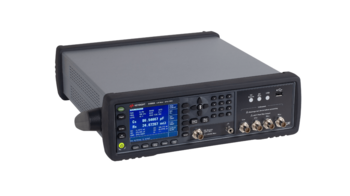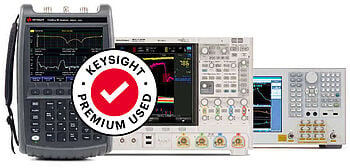- Introduction
- Inductance Definition
- Key Formula for Inductance
- How Inductance Works
- Self-Inductance vs. Mutual Inductance
- Factors Affecting Inductance
- Applications of Inductance
- Testing Inductance
- Comparing Inductors
- Understanding Inductance in Real-World Circuits
- Additional Challenges in Inductor Design
- Conclusion
- Whenever You’re Ready, Here Are 5 Ways We Can Help You
Inductance is a fundamental concept in electronics and electromagnetism that plays a critical role in designing and analyzing electrical circuits. But have you ever wondered why an inductor resists changes in current or how this property impacts your circuit's behavior?
Understanding inductance is essential for tasks ranging from designing filters to troubleshooting power supplies. Let's explore inductance in detail, including how it works, key formulas, practical applications, and testing methods.
Inductance Definition
Inductance is the property of a conductor, usually a coil, that resists changes in current flow.
It is caused by the magnetic field generated around the conductor when current passes through it. When the current changes, this magnetic field induces a voltage (known as electromotive force or EMF) that opposes the change, as described by Lenz’s Law.
The unit of inductance is the henry (H). A component has an inductance of 1 henry when a change in current of 1 ampere per second induces a voltage of 1 volt.
Key Formula for Inductance
The inductance LLL of a coil can be calculated as:
L = (N² × μ × A) / l
Where:
- N: Number of turns in the coil
- μ: Permeability of the core material
- A: Cross-sectional area of the coil (in square meters)
- l: Length of the coil (in meters)
| Key Takeaway |
|---|
| Inductance is the property of a circuit that resists changes in current by generating a magnetic field, playing a critical role in energy storage, filtering, and signal processing. Its performance depends on factors like coil design, core material, and operating conditions, making accurate measurement essential for reliable circuit design. |
How Inductance Works
When current flows through a conductor, it generates a magnetic field around it. In the case of a coil, this magnetic field becomes more concentrated, increasing its inductance.
Self-Inductance vs. Mutual Inductance
- Self-inductance: This refers to a coil’s ability to induce voltage in itself when the current changes.
- Mutual inductance: This occurs when the magnetic field from one coil induces voltage in another nearby coil.
Factors Affecting Inductance
The inductance of a coil or inductor depends on a combination of physical and material properties. Here’s a more detailed explanation of these factors:
1. Number of Turns
The inductance L is proportional to the square of the number of turns (N) in the coil. This relationship means that doubling the number of turns increases the inductance by a factor of four. More turns create a stronger magnetic field for the same amount of current, making the coil more effective at resisting changes in current.
2. Core Material
The core material of the coil greatly influences the inductance. Materials with higher magnetic permeability (μ) concentrate the magnetic field and enhance inductance. For example:
- Air has low permeability, resulting in low inductance.
- Ferrite and iron cores significantly increase inductance because they guide and amplify the magnetic field efficiently.
The choice of core material also affects the frequency range of the inductor. Ferrite cores are commonly used in high-frequency applications, while laminated iron cores are better suited for low-frequency, high-power applications.
3. Coil Geometry
The physical dimensions of the coil impact the magnetic field distribution:
- Cross-sectional area (A): A larger area increases the inductance by providing more space for the magnetic field. For instance, coils with thick wire and large diameters have higher inductance.
- Length of the coil (l): A shorter coil with the same number of turns has higher inductance because the magnetic field is more concentrated.
4. Spacing Between Turns
The distance between adjacent turns of the coil determines how well the magnetic field interacts with itself:
- Tightly wound coils: When turns are close together, the magnetic field lines are more concentrated, increasing inductance.
- Widely spaced turns: Greater spacing reduces the interaction between turns, leading to lower inductance. This design might be used to reduce parasitic capacitance in high-frequency applications.
5. Frequency of Operation
Although not a structural factor, the operating frequency of the circuit can influence the effective inductance. At high frequencies, skin effect and core losses can reduce the inductance, making material selection and design optimization even more critical.
6. Temperature
Temperature changes can affect the magnetic properties of the core material, altering the inductance. Materials like ferrite exhibit changes in permeability with temperature, which can impact the overall performance of the inductor.
By carefully considering these factors, you can design inductors tailored to specific applications, ensuring optimal performance and efficiency.

Applications of Inductance
Inductance is integral to many applications in electronics, including:
- Energy storage: Inductors store energy in magnetic fields, crucial for power supplies.
- Filtering: Inductors in filters block high-frequency signals while allowing low-frequency signals to pass.
- Transformers: Mutual inductance enables power transfer between circuits.
- Oscillators: Inductance, combined with capacitance, is used to create oscillatory circuits.
Testing Inductance
Accurately measuring inductance is essential for ensuring circuit reliability and performance. Engineers use a variety of specialized tools and methods tailored to the application and precision required:
- LCR Meters
LCR meters are the most common tools for measuring inductance. They work by applying a known AC signal to the inductor and measuring its response. These meters can provide highly accurate readings of inductance across a range of frequencies, which is particularly useful for components operating in high-frequency circuits. - Oscilloscopes with Function Generators
By pairing an oscilloscope with a function generator, you can measure inductance indirectly. This method involves creating an RL circuit (resistor-inductor) and observing the voltage and current waveforms. Using the phase difference and the known resistance, you can calculate the inductance. While less direct than an LCR meter, this approach is versatile and widely used in lab settings. - Bridge Circuits
Inductance bridges, such as Maxwell or Hay bridges, are traditional tools for precise inductance measurements. These circuits balance an unknown inductance against a known capacitance and resistance, allowing highly accurate measurements. Although less common today due to the availability of digital equipment, bridge circuits are still used in specific high-precision applications.
Comparing Inductors
| Type of Inductor | Core Material | Advantages | Common Applications |
|---|---|---|---|
| Air Core | Air | High linearity, no core saturation | High-frequency circuits, RF filters |
| Ferrite Core | Ferrite | High permeability, compact design | Power supplies, transformers |
| Iron Core | Laminated Iron | Handles high power, low frequency | Audio transformers, heavy machinery |
| Toroidal | Ferrite or Iron | Low EMI, compact design | High-efficiency power supplies |
Understanding Inductance in Real-World Circuits
Inductors play a crucial role in many practical circuit designs, often functioning as part of a larger system rather than standalone components. Their ability to store energy in a magnetic field and resist changes in current makes them invaluable in a variety of applications.
Role in Power Electronics
In power electronics, inductors are essential in converters and regulators. For example:
- Buck and boost converters: Inductors smooth current and store energy during switching cycles.
- Filters in power supplies: Inductors suppress high-frequency noise, ensuring stable DC output.
Signal Processing Applications
Inductors, when paired with capacitors, form LC filters used to shape signal frequency characteristics:
- Low-pass filters: Block high frequencies while allowing low frequencies to pass.
- Band-pass filters: Selectively pass a specific range of frequencies, critical for communication systems.
Energy Storage and Transfer
Inductors temporarily store energy in their magnetic field and release it when the circuit requires it. This property is key in applications like flyback transformers and energy storage systems.
Additional Challenges in Inductor Design
In addition to core saturation, parasitic capacitance, and eddy currents, engineers face several other challenges when designing with inductors:
- Frequency-dependent behavior At higher frequencies, inductors behave less ideally due to effects like skin depth and proximity losses, which increase resistance and reduce efficiency.
- Thermal management Inductors generate heat due to resistive losses in the winding and core. Managing this heat is critical in high-power applications to prevent performance degradation.
- Physical size and layout Inductors with higher inductance often require more turns or larger cores, increasing their overall size. Space constraints in compact devices like smartphones or IoT sensors require innovative design approaches.
- Magnetic coupling In circuits with multiple inductors, unintended magnetic coupling between them can lead to crosstalk, affecting circuit performance. Proper spacing or shielding is often necessary.
- Material limitations The choice of core material affects not only inductance but also losses, thermal stability, and operating range. High-performance materials like nanocrystalline alloys are costly, presenting a trade-off between performance and budget.
By understanding these challenges and considering real-world factors, you can optimize inductor design for specific applications, ensuring efficiency, reliability, and cost-effectiveness.
Conclusion
Inductance is a fundamental concept in electrical engineering, influencing everything from energy storage to signal processing.
By understanding how inductors function, the factors affecting their performance, and the challenges of their design, you can create more efficient and reliable circuits.
For high-quality testing equipment, visit the Keysight Used Equipment Store. Explore premium oscilloscopes, spectrum analyzers, function generators, and multimeters—all calibrated for accuracy and reliability at a fraction of the cost. Equip your lab with trusted tools today.

Whenever You’re Ready, Here Are 5 Ways We Can Help You
- Browse our Premium Used Oscilloscopes.
- Call tech support US: +1 800 829-4444
Press #, then 2. Hours: 7 am – 5 pm MT, Mon– Fri - Talk to our sales support team by clicking the icon (bottom right corner) on every offer page
- Create an account to get price alerts and access to exclusive waitlists.
- Talk to your account manager about your specific needs.
